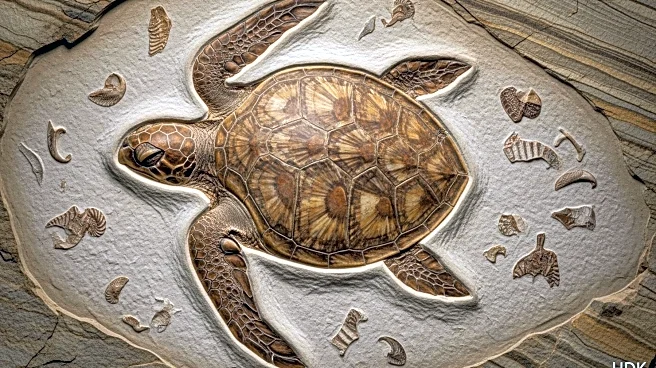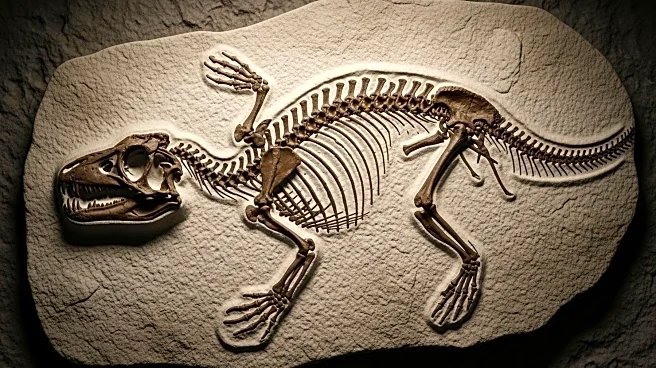What's Happening?
An international team of scientists has unearthed a 50-million-year-old fossil sea turtle near Afrin, Syria. The species, named Syriemys lelunensis, represents the first fossil vertebrate formally described from Syria. The discovery includes a well-preserved internal cast of the shell, sections of the ventral carapace, pelvis, and hind limbs. This fossil provides the earliest evidence of the Stereogenyini, an extinct group of side-necked turtles, extending their evolutionary history by over ten million years. The research was led by Wafa Adel Alhalabi, a Syrian-Brazilian paleontologist, and involved experts from Brazil, Syria, Germany, Lebanon, and Canada.
Why It's Important?
The discovery of Syriemys lelunensis is significant as it adds a new geographical location to the distribution of the Stereogenyini, suggesting a possible origin in the Mediterranean region. This finding enhances the understanding of ancient marine life and the evolutionary history of turtles. It also highlights Syria's potential for scientific research despite its complex political situation. The study underscores the importance of international collaboration in paleontological research, contributing to the broader knowledge of Earth's historical biodiversity.
What's Next?
The research team plans to continue their work with a series of articles titled 'Recovering lost time in Syria,' based on materials observed and documented by Alhalabi. This series aims to explore Syria's geological past and the period when scientific research in the country was at a standstill. The ongoing research may uncover more fossil evidence, further illuminating the region's ancient marine history and contributing to global paleontological knowledge.
Beyond the Headlines
The discovery of Syriemys lelunensis amidst Syria's political turmoil highlights the resilience of scientific endeavors in challenging environments. It emphasizes the role of science in preserving cultural heritage and advancing knowledge despite geopolitical conflicts. The research also reflects the potential for future discoveries in regions with rich geological histories, offering insights into the interconnectedness of global ecosystems over millions of years.














